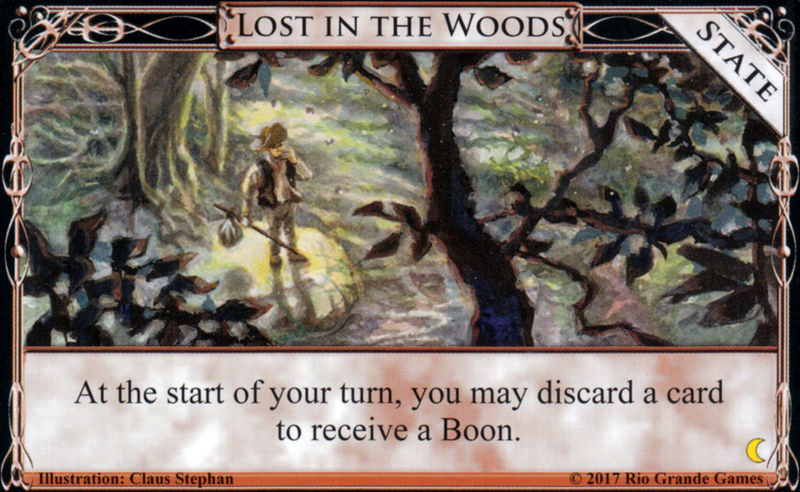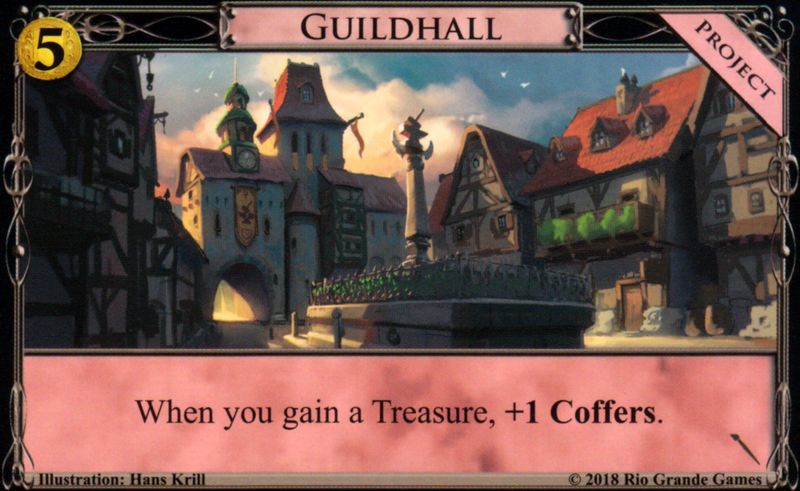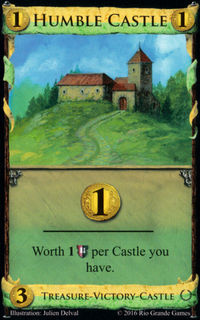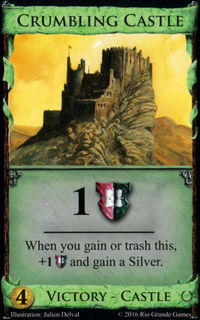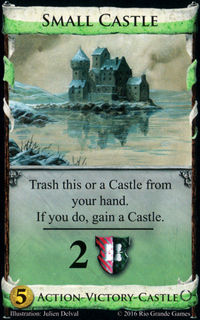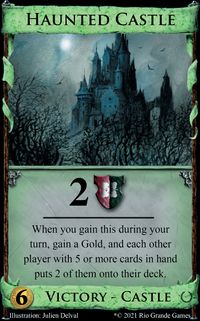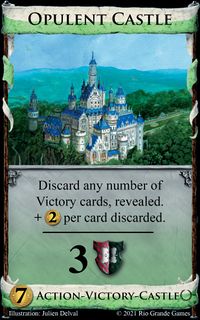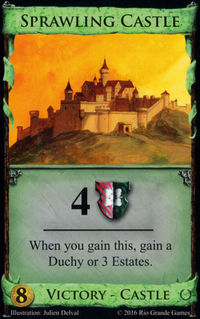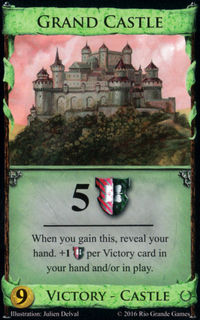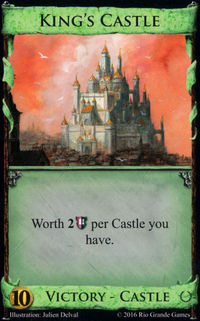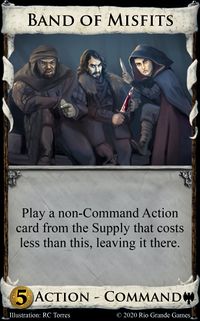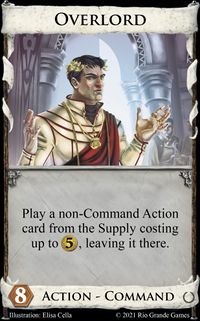This is basically a rewrite of an old article I wrote.If you have an example of one of these, I'd appreciate a picture / replay.Competitive Dominion is first and foremost a game of optimization. It's not enough to do something cool - you have to do it quickly. Accordingly, a lot of the strategy is about figuring out what's cool and whether you can do it fast enough to make it worth it.
I like to think of Dominion gameplay as two broad categories: strategy, and tactics. Strategy is your plan for the entire game - tactics is your plan for this turn. In this article I'm going to focus on just one aspect of the tactics: how to play your hand. This is the nitty-gritty of Dominion optimization - you can usually autopilot your hands, but sometimes you get a slight edge if you don't, and those edges can add up over the course of a game. More importantly, the correct play is a lot less ambiguous - this makes it easier to give advice that actually doesn't depend on the board (which is a rare situation in Dominion.)
There are two principles to keep in mind.
1. Keep your options open as long as possible.2. Watch your reshuffle timings.Let's begin.
GainersIf you have a card that gains other cards to your discard pile, and you want to draw those cards, then playing the gainer before you reshuffle lets you get that card into your draw pile sooner. Conversely, if you don't want to draw the gained card, playing the gainer after the reshuffle guarantees you can't draw it for 1 cycle through your deck.
In either case, you should play the gainer as late as possible - if you can, gain cards right before the shuffle, or at the end of your turn. This gives you more information - depending on what you draw, you may decide to gain a different card than you intended.
TrashersFor cards that trash from your hand, play them later rather than earlier. It doesn't matter when you trash your cards, because you've already drawn them. The only thing that matters is that they get trashed before you finish your turn.
This is most important for Junk Dealer - because Junk Dealer is a cantrip, it can be tempting to play it early to draw another card, but unless you need that card now, you should play your other draw cards first, to see if you can find a better trash target.
Saving Your Throne RoomsSome cards are better to copy than other cards. You always want to double the Action that gives you what you're lacking the most. If you need draw, then Throne Room Hunting Grounds. If you can comfortably draw your deck, save it for a card that gives +$ or +Buy. If you need Actions, then try to save your Throne Room for another Throne Room if you can, and then double a card that gives +Actions if you can't.
In any of these cases, it is better to hold onto Throne Room until you know what you need this turn. Maybe you need the +Cards because you drew poorly. Or maybe you don't, in which case you'd rather have the +$.
If you draw a hand of Throne Room and 4 other Actions, then playing Throne Room first is probably wrong. You want to play your other Actions first, to see if you can draw a better target for Throne Room, and then play Throne Room only when you're at-risk of running out of good Throne Room targets. (Either because you are running low on Actions, or because you are drawing too many Throne Rooms and not enough non-Throne Room actions.)
This logic is especially important for King's Court - the best target for King's Court is almost always another King's Court, so you want to save your KC until as late as possible.
A smaller note is that if you have plenty of Actions, you actually don't need to Throne Room your Throne Room. TR-TR-Action1-Action2 takes 1 action. TR-Action1 then TR-Action2 takes 2 actions. In both cases, you play Action1 twice and Action2 twice. The latter case costs 1 more action but gives you more flexibility. (For example, TR-Action1 to get close to the end of a reshuffle, play Butcher to gain a card, TR-Action2 to trigger reshuffle.)
Cards relying on cards in your deckThese are cards like Ironmonger, Chariot Race, and Golem, where they reveal cards from your deck and do something based on what you reveal. In games where you can draw your deck, you want to play your card-revealers first, while you still have cards in your deck to reveal. It's always sad when someone saves their Golem and then it only reveals 1 Action instead of 2.
Wishing Well orderingDan already mentioned this in another article. Say you have N cantrips, 1 Wishing Well, and the only thing you care about is drawing a specific card (say a Remodel to Remodel for the final Provinces.) You should play the Wishing Well last.
- If the Remodel is in the top N+1 cards, you draw it no matter when you play Wishing Well.
- If the Remodel is the N+2nd card, then you only draw it if you play Wishing Well last and wish for Remodel.
The same is true if your hand is generally draw cards, instead of just cantrips.
Card-Revealers and Shuffle TimingsSpeaking of Wishing Well, note that because it draws a card and reveals a card, it triggers a reshuffle if you have fewer than 2 cards in your deck, even though it only draws 1. If you don't want to shuffle, your hand is Peddler + Wishing Well, and there are exactly 2 cards left in your draw pile, then you need to play WW first (wishing for a card you don't have), and then Peddler.
Similar principles hold for Sentry (reshuffles with < 3 cards), Cartographer (reshuffles with < 5 cards), Patrol (reshuffles with < 7 cards), and others.
Unintuitive DiscardsIf you get hit with a discard attack like Militia, you have to choose the best 3-card hand. Note this may be different from the 3 best cards in your hand.
Here's the game state: It's early in the game. I have 2 cards left in my draw pile. My hand is Warehouse, 2 Coppers, 2 Estates. My opponent plays Militia.
The play here is to discard 2 Coppers. Why? Well, I'm not going to buy anything that costs $2. If I discard 2 Coppers, I can play Warehouse to trigger the reshuffle, making both Estates miss the shuffle. Sure, the Warehouse misses the shuffle too, but that's worth it. This was a rare scenario where the best hand was actually one that had Estates in it.
Throne Roomed-MinionsAn old classic. If you Throne Room a Minion and plan to discard your hand, you should discard your hand first. That way, you have the choice of +$2 (if your new hand is good) or a 2nd discard (if your new hand is terrible).
It's usually impossible to attribute a win entirely to these choices, since each choice only gives you a small edge. On the other hand, there's no reason to
not do these things, so you should just do them. It takes a bit of practice to keep it all in mind, but soon it becomes second-nature, and then you can focus on the important strategy questions instead.


